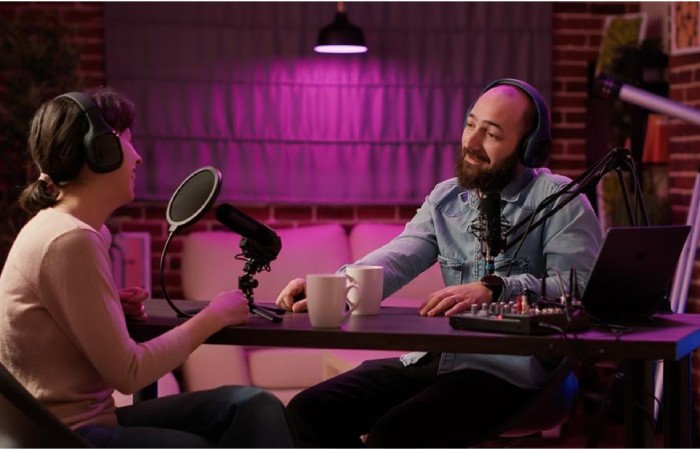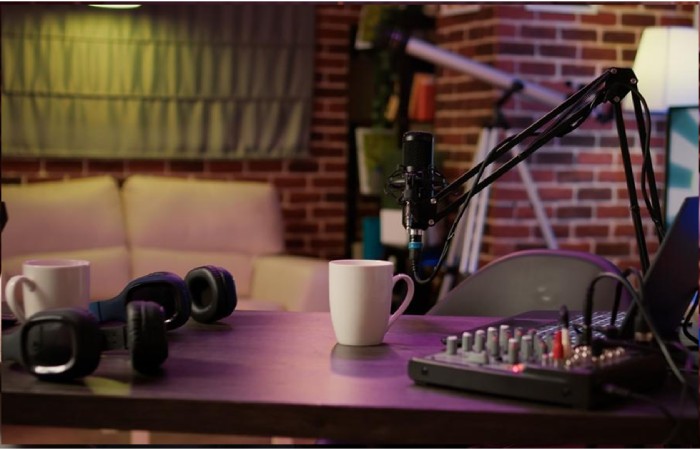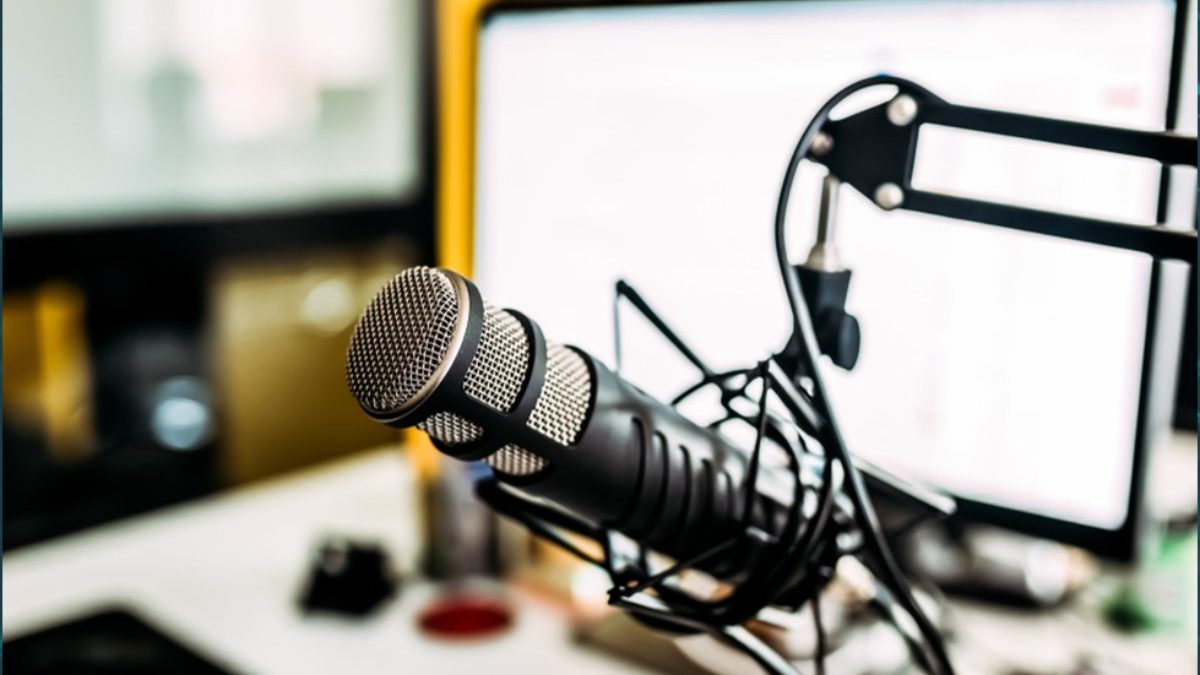If you’re a regular podcaster, you know that the quality of your studio and streaming setup directly impacts the quality of your content. So, if you’re looking to up your podcasting game, it’s time to consider some studio upgrades.
Whether you’re an experienced podcaster or a newcomer to the scene, these simple improvements to your podcast studio can help you expand your reach and produce content that resonates with your listeners.
Table of Contents
1. High-Quality Microphones
Crisp, clear audio is the foundation of any successful podcast. Investing in a high-quality microphone can enhance the overall sound of your content. Dynamic and condenser microphones are two common choices. Dynamic mics are excellent for reducing background noise. Condenser mics can record a wider range of frequencies, which is ideal for vocal clarity.
But don’t forget about microphone placement and accessories. Pop filters help eliminate plosive sounds, and adjustable microphone arms ensure you can find the perfect angle. A good microphone setup can transform the audio quality of your podcast for polished, professional results.
2. Advanced Recording Software
Your podcast is only as good as the software you use to record and edit it. Consider popular options like Audacity, a free and user-friendly choice for beginners. Adobe Audition is favored for its comprehensive editing capabilities and user-friendly interface, while Pro Tools is an industry-standard with superior audio editing and mixing features.
When shopping around for software options, look for multi-track recording, noise reduction, and intuitive editing tools. Ensure it integrates well with other equipment in your studio. The right recording software empowers you to create an engaging audio experience for your audience.
3. Soundproofing Your Space
Creating a controlled audio environment is essential to producing a podcast with clean and clear sound. Soundproofing and acoustic treatment are often used interchangeably, but they serve different purposes. Soundproofing is about keeping external noise out, while acoustic treatment improves the sound quality within your space.
To soundproof your studio, you can use materials like mass-loaded vinyl, acoustic caulk, and weatherstripping to seal gaps and prevent sound leakage. This is particularly useful if you’re in a noisy environment or don’t want to disturb others while recording.
For acoustic treatment, consider foam panels and bass traps, which help eliminate echoes and enhance sound quality. A combination of both soundproofing and acoustic treatment can help your studio capture pristine sound.
4. Comfortable and Functional Furniture
Podcasting isn’t just about your equipment — it’s also about the environment you work in. The right furniture is essential for creating a comfortable and functional studio setup. Ergonomics plays a major role in your comfort and productivity.
Consider investing in a comfortable chair with neck and lumbar support and a functional, height-adjustable desk or equipment stand. This minimizes the strain on your spine from sitting during prolonged recording sessions.
Ensure that your studio’s layout allows for a smooth solo recording or can accommodate guests during interviews. A well-designed and ergonomic studio setup ensures you can focus on your content without distractions.

5. Professional Headphones
High-quality headphones are an essential tool for podcasters. They help you monitor the audio quality, ensuring your content sounds its best. Closed-back headphones provide excellent noise isolation, blocking out external sounds, while open-back designs allow some ambient sound in for a more natural listening experience.
Wired headphones are often preferred for the most reliable audio quality, but wireless options offer mobility. However, wireless models have a limited battery life and may cut out during recording if not charged properly.
6. Enhanced Lighting for Video Podcasts
The podcasting world is evolving, and video podcasts are becoming increasingly popular, with 57 percent of listeners stating that they prefer podcasts that come with video. High-quality video content requires proper lighting. You don’t need an elaborate setup to get started, but understanding different lighting options can significantly improve your content quality.
Consider key lights, fill lights, and backlighting to create balanced, flattering illumination. Proper placement and diffusion techniques can soften harsh shadows and make you look your best on camera.
7. High-quality cameras and Webcams
If you’re venturing into video podcasts or want to upgrade your visuals, investing in a high-quality camera is the first step. When choosing a camera, look for features like good low-light performance, high resolution, and manual focus options for more control over your shots.
If you’re not ready to commit to a professional camera, consider upgrading the webcam for your PC. Look for models with a wide field of view, auto HD recording, and a high frame rate to enhance your video quality. Remember framing and camera angles to ensure your visuals complement your content.
8. Mixer or Audio Interface
Choosing between a mixer and an audio interface depends on your recording needs. A mixer is perfect for collaborative podcasts or live interviews, enabling you to fine-tune audio levels and EQ settings for multiple microphones or audio sources. This creates a dynamic and professional audio experience.
However, an audio interface simplifies the audio path for solo recording, ensuring clean, low-latency audio input and output to your computer. Select an option that matches your studio’s size and specific requirements to achieve optimal audio control and enhance the overall quality of your podcast.

9. Reliable Streaming and Internet Equipment
For podcasters who live stream their content, a stable internet connection is non-negotiable. A strong and consistent internet connection ensures your live broadcasts go off without a hitch. Invest in reliable streaming and internet equipment, such as a high-quality router and dependable ethernet cables.
These components can make a big difference in the quality of your live streams. It’s also essential to run internet speed tests and optimize your network for streaming. Always have a backup plan in case of unexpected interruptions.
Create the Perfect Setup to Spread Your Message
Upgrading your podcasting studio isn’t just about having the latest equipment. It’s about creating a setup that helps you deliver your message effectively. Whether focused on audio quality, video content, or both, these upgrades can help you take your podcast to the next level and reach a broader audience.

